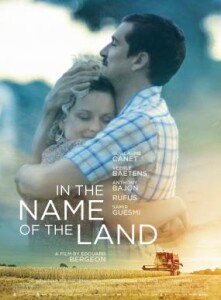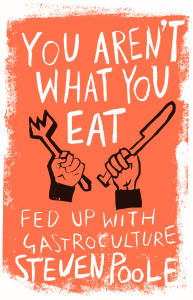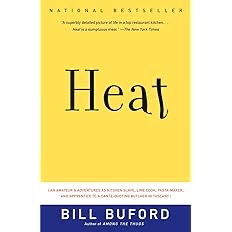 This film was a box office hit in France, and did very well at the 2020 French Film Festival in Sydney. It’s basically about how agricultural methods and rural life have changed over the last 40 years. The director, Edward Bergeon, based it on his life growing up on a farm.
This film was a box office hit in France, and did very well at the 2020 French Film Festival in Sydney. It’s basically about how agricultural methods and rural life have changed over the last 40 years. The director, Edward Bergeon, based it on his life growing up on a farm.
The main character, a French farmer is in debt, and has to deal with the pressure to upgrade his farm with a Faustian bargain. To do this, he signed up with a large corporation which effectively turns farmers almost into slaves with huge debts and consequently depression. There is very little farmers can do about it because large corporates hold all the power. And if a farmer objects and decides to become litigious, the corporates have deeper pockets to afford hotshot lawyers.
This means having to bow to the pressure of industrial farming and leave behind traditional agricultural practices which are actually better for the soil and animal health.
But, it’s not just anxiety and depression, there are other problems which farmers have to deal with:
Due to the Covid-19 pandemic Australian farmers and market gardeners are having trouble finding labour to pick and pack their produce for market. Foreign backpackers usually do this work, but are not around right now, so there could be a food shortage. The pandemic has revealed the limitations of industrial food systems that are about efficiency and profit, not resilience.
Bushfires – This time last year a lot of the Australian landscape was scarred and charred with bushfires. Apart from all sorts of buildings being destroyed, millions of animals died. This has woken people up to climate change and the effects of it. There is a lot of scientific climate evidence, as well as indigenous land management practices, however, some of this is ignored and trivialized by some media, some politicians, and people who should know better. This lack of attention has an effect on the food on your plate.
Political issues – Nick Rose runs the Food Sovereignty Alliance, and is a researcher for the National Food Plan. The agriculture minister at the time said that this plan “will ensure Australia has a sustainable, globally competitive, resilient food supply that supports access to nutritious and affordable food”. This plan is meant to benefit all Australians, but the details suggest it is really a plan which is more likely to benefit large agri-business and retailers. It also suggests that it’s a continuation of business as usual, which is based on some lazy assumptions: food insecurity will automatically increase, farm incomes will be higher, food prices assume environmental, health and social costs, the free market is efficient, and will deal with inequity and social justice. (1)
Intensive farming vs sustainable land use – Cropping land is used to grow fodder for livestock rather than food for humans. Soybeans are a crop whose by-products can be used in processed foods, including vegan. But the majority of the world’s production of soy is grown for livestock feed, and this is why the growing demand for meat, especially in China, has contributed to an increase in demand for meat. This increases greenhouse gas emissions. It also contributes to deforestation in South America, and the displacement of indigenous people and small farmers. Similar is also happening around the world with: palm oil, almonds, almond milk products, cashews, avocados, and no doubt many more. Linked to this is abuse of workers, child labour, very low wages, waste of water, organized crime, greenhouse gas emissions linked to artificial fertilizers, and long distance delivery.
Perhaps farmers should be encouraged to switch to crops consumable for humans – better for our health and the health of the soil. There’s more to it than just decreasing food miles, although that’s important. A quantity of grain produced in another country does a lot less harm than the same quantity of chicken or pork produced a relatively short distance away. If Australia had a climate change policy, maybe an idea would be to pay farmers to do something different, rather than spending more public money on trashing our life-support systems.
Regenerative farming – Charles Massy wrote a book titled Call of the Reed Warbler which is about the recognition of his own mistakes, regenerative farming and indigenous land management. It’s a memoir and a call to arms to change the way we farm, eat and think about food. Here’s a provocative quote: “How modern industrial agriculture… is not just poisoning us but is also, confoundingly, making us obese while starving us at the same time with food that is bereft of nutrients.” He went into debt buying food for his sheep during the ‘80s and ‘90s drought, when his farm became a dust bowl. The key to regenerative agriculture is maintaining groundcover and moving stock regularly. Also, lessons can be learned from Indigenous people and their rural practices.
Grass protects the soil by trapping water, and is a home for insects for natural pest control. Some chemical companies dispute the possible link Massy draws between using glyphosate on crops, and the increase of cancers and auto-immune diseases.
Farmers don’t like being undercut and sometimes feel pressured to produce chlorinated chickens, and use antibiotics, steroid hormones and pesticides. These practices usually take place in CAFOs (Concentrated animal feeding operations) which are huge industrial farms. These products are cheap and large retailers love them, therefore customers who are food insecure also love them. But, it is on poultry factory farms that some viruses have mutated into something harmful.
It’s obvious that there are competing issues, such as price, animal welfare, carbon footprint and consumer preference. What we grow and eat will largely be the result of political choices, which are not always the wisest of choices.
Climate change – A very large portion of food production is responsible for greenhouse gas emissions and this is partly due to dietary changes, more food from animal sources, food waste, and how food is produced. Halving food waste, eating less meat and more vegetables, would drastically reduce projected emissions. If we change our diet we’ll need policies and governments that make it feasible and affordable.
Markets in the northern hemisphere are probably going to create more stringent import standards for Australian farm products. Australian farmers who are slow to respond are likely to incur export sales penalties. Also, the government will need to tighten import rules to avoid undermining their own domestic greenhouse gas emissions. Most countries have emissions targets, but Australia seems not to want to pay much attention to this issue.
No matter how much greenhouse gas emissions are reduced, Australian farmers will still need to improve on capturing carbon, change herd management systems, increase growth rates, and match production to appropriate farm sizes.
We need to think about how much land we need to feed ourselves. This would help prevent both climatic and ecological disasters, as well as governments everywhere using taxpayers’ money to continue hell bent on planetary destruction.
Getting back to ‘business as usual’ should not happen. It should be an opportunity to change food and agricultural practices.
- Businesses could measure success and productivity in a way that is more just, and ecologically-oriented, ie. metrics that account for the true costs of food.
- Governments at all levels need to continue to develop policies which create and maintain sustainable food production. Subsidies could be given to farmers who avoid harmful practices, such as factory farming, which would incentivise other farmers.
- Plan for reduction in food waste.
- Plan for possible future pandemics of zoonotic diseases, and more vigilant food safety.
This pandemic has shown us that food is everyone’s business. And, the farmer in the French film shows us that we too can be broken when the agricultural system is broken.
Footnote:
- The draft National Food Plan: putting corporate hunger first.
The Conversation 20 July 2012


 This film was a box office hit in France, and did very well at the 2020 French Film Festival in Sydney. It’s basically about how agricultural methods and rural life have changed over the last 40 years. The director, Edward Bergeon, based it on his life growing up on a farm.
This film was a box office hit in France, and did very well at the 2020 French Film Festival in Sydney. It’s basically about how agricultural methods and rural life have changed over the last 40 years. The director, Edward Bergeon, based it on his life growing up on a farm.